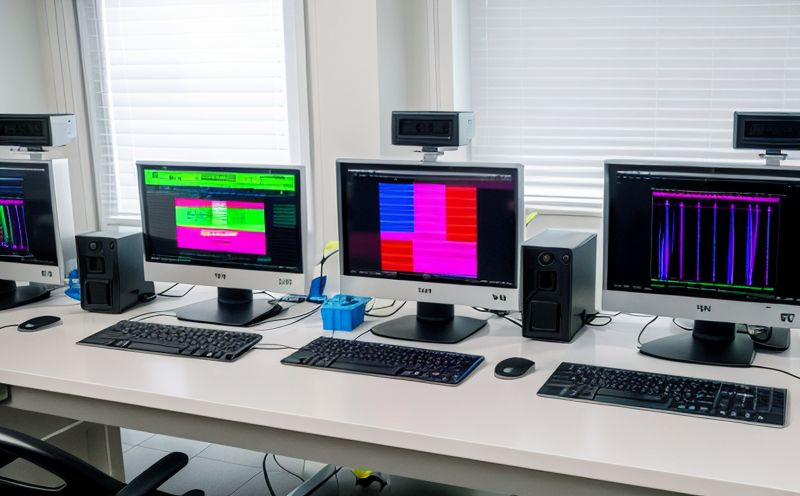WHO Influenza Viral Detection in Public Health Labs
The World Health Organization (WHO) influenza viral detection tests are critical tools used by public health laboratories to monitor and respond to seasonal and pandemic influenza outbreaks. These tests help ensure accurate diagnosis, timely intervention, and effective control measures for influenza viruses worldwide.
Public health labs play a crucial role in safeguarding global health through the early identification of influenza viruses that can cause significant morbidity and mortality. The WHO provides guidelines for testing methods to standardize practices across different regions and countries. The tests focus on detecting influenza A and B subtypes, which are responsible for most seasonal outbreaks.
The process begins with specimen collection from individuals exhibiting symptoms of the flu. Specimens may include throat swabs, nasal aspirates, or sputum samples. Once collected, these specimens undergo rigorous testing to identify viral antigens or nucleic acids using methods like polymerase chain reaction (PCR) and lateral flow assays.
WHO influenza viral detection tests are essential for several reasons:
- Surveillance: Public health labs use these tests to monitor the prevalence of different influenza subtypes in their regions. This information helps predict the likelihood of an outbreak or pandemic, allowing for proactive measures.
- Epidemiology: By identifying specific strains of influenza, public health authorities can better understand the spread and evolution of these viruses. This knowledge is vital for developing targeted interventions such as vaccination programs tailored to prevalent strains.
- Diagnosis: Rapid detection of influenza allows healthcare providers to diagnose and treat cases promptly, reducing complications and improving patient outcomes.
- Evaluation: These tests are used to evaluate the effectiveness of public health measures, including vaccination campaigns and antiviral treatments.
The WHO guidelines ensure that these tests meet stringent quality standards. Laboratories must adhere to international norms set by ISO, ASTM, EN, IEC, and other recognized bodies to maintain accuracy and reliability in their results.
In summary, WHO influenza viral detection is a cornerstone of public health preparedness. It enables early detection, effective response, and informed decision-making regarding the management of influenza outbreaks.
Why Choose This Test
Selecting WHO influenza viral detection tests for your laboratory involves several key advantages:
- Accurate Diagnosis: The use of standardized methods ensures that results are consistent and reliable, facilitating accurate diagnosis.
- Global Consistency: Adherence to WHO guidelines guarantees compatibility with other laboratories worldwide, facilitating international collaboration and data sharing.
- Informed Decision-Making: Timely detection allows for prompt implementation of public health measures, including vaccination campaigns and antiviral treatments.
- Cost-Effectiveness: By identifying outbreaks early, the use of these tests can prevent more extensive spread of influenza, reducing healthcare costs associated with widespread illness.
The test is particularly beneficial for regions where seasonal or pandemic influenza poses a significant public health threat. Public health labs that invest in WHO influenza viral detection are better equipped to protect their communities and contribute to global health security.
Customer Impact and Satisfaction
- Improved Public Health Outcomes: By enabling early detection, these tests lead to more effective interventions, reducing the impact of influenza outbreaks.
- Enhanced Preparedness: Laboratories gain valuable insights into prevalent strains, which helps in planning and executing vaccination campaigns.
- Patient Safety: Accurate diagnosis ensures that patients receive appropriate treatment, minimizing complications and improving recovery times.
- Research Contributions: The data collected through these tests contributes to ongoing research efforts aimed at understanding influenza viruses better.
- Compliance with International Standards: Laboratories adhering to WHO guidelines are seen as reputable and reliable partners in public health initiatives.
- Community Trust: Transparent and reliable diagnostic capabilities build trust within the community, fostering collaboration between healthcare providers and patients.
- Efficient Resource Allocation: By focusing on prevalent strains, resources can be allocated more effectively to address critical needs.
- Sustained Collaboration: Laboratories that demonstrate excellence in influenza detection are likely to form stronger partnerships with other health institutions.
The implementation of WHO influenza viral detection tests not only benefits the immediate community but also contributes to a broader network of public health security. It ensures that no region is left behind in combating influenza threats, thereby enhancing global health resilience.
Environmental and Sustainability Contributions
The use of WHO influenza viral detection tests aligns with broader environmental and sustainability goals by promoting efficient resource utilization and reducing unnecessary healthcare interventions. Here’s how:
- Eco-Friendly Practices: By focusing on accurate diagnosis, the number of unnecessary treatments is minimized, leading to reduced medical waste.
- Resource Efficiency: Precise testing reduces the need for extensive diagnostic procedures, conserving healthcare resources such as reagents and personnel.
- Global Collaboration: Standardized methods ensure that data collected from different regions can be compared, fostering a collaborative approach to global health challenges.
- Healthcare Cost Reduction: Early detection of influenza leads to quicker interventions, reducing the overall cost burden on healthcare systems.
- Improved Public Health Infrastructure: Enhanced diagnostic capabilities contribute to stronger public health infrastructure, making communities more resilient against future outbreaks.
- Reduced Travel Impact: By minimizing unnecessary travel for diagnosis, the environmental footprint of healthcare is reduced.
In conclusion, WHO influenza viral detection tests are not only vital for immediate public health outcomes but also play a crucial role in sustainable and resilient global health systems. Their adoption contributes to a healthier planet by promoting efficient resource use and fostering collaboration across borders.





